#Aisin-Gioro Puyi
Text
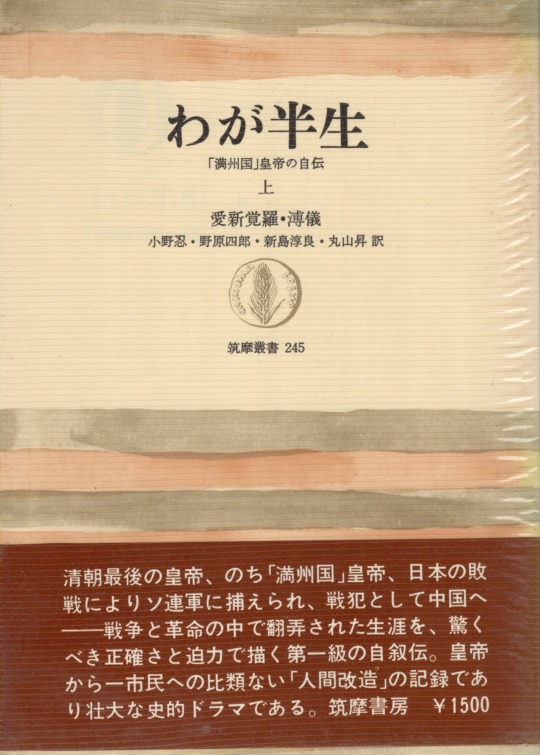

わが半生-「満州国」皇帝の自伝
愛新覚羅・溥儀、小野忍・野原四郎・新島淳良・丸山昇=訳
筑摩叢書 245・246
装幀=原弘(NDC)
#わが半生-「満州国」皇帝の自伝#愛新覚羅溥儀#Aisin-Gioro Puyi#Xuantong Emperor#宣統帝#小野忍#野原四郎#新島淳良#丸山昇#筑摩叢書#原弘#NDC#日本デザインセンター#anamon#古本屋あなもん#あなもん#book cover#満洲#満州
6 notes
·
View notes
Text
Production Notes — Background
Bernardo Bertolucci's THE LAST EMPEROR was filmed entirely on location in China in 1986. Bertolucci and his producer Jeremy Thomas were the first Western filmmakers to be allowed to make a film about modern China and it took two years of complex negotiations to obtain the unprecedented permissions which also allowed them to film in hitherto forbidden locations.
On August 4th, 1986, in the Chinese capital Beijing (formerly Peking), the cameras finally rolled on one of the biggest and most ambitious films ever made.
The independently financed production is an epic tale which embraces the entire sweep of twentieth century China and the years of the most tumultuous changes the country has ever seen.
Yet despite its cast of thousands, Itys palatial and exotic locations, its sumptuous design film is also the intimate story of an extraordinary and unique man and his journey of self- discovery, a man who started life as the ruler of half the world's population and ended it as a humble gardener in Peking.
Bertolucci was fascinated by the life of the ex-Emperor and the question which became the heart of his film -can a man change? Did Pu Yi change and if so, how much during the years of his re-education in prison?
"Pu Yi's story can be described in many ways," says Bertolucci. "As a journey from darkness to light or as the Chinese say, changes from a dragon to a normal person, from an Emperor to citizen.
Pu Yi, the last emperor, came to the Imperial throne in 1908 at the age of 3, the Son of Heaven, Lord of Ten Thousand Years, was forced to abdicate at the age of six, was thrown out of the Forbidden City in 1924 with his two wives and drawn into the life of a Western-style playboy. In 1931, he succumbed to the seductive Japanese invitation to mount the throne again and became a puppet emperor in the Japanese controlled state of Manchukuo. Captured by the Russians in 1945, he was returned to China in 1950, expecting to be executed by the communists. Instead, he spent ten years in gaol in the hands of an enlightened prison governor and emerged a changed man. He returned to Peking at the start of the Cultural Revolution and became a gardener, more free than he had ever been before. He died in 1967.
John Lone stars as Pu Yi, Joan Chen as the Empress Wan Jung, and Peter O'Toole as Reginald Johnston, the emperor's tutor. The Director of Photography is two-time Oscar winner, Vittorio Storaro, Production Designer is Ferdinando Scarfiotti and Costume Designer is James Acheson. The screenplay is written by Mark Peploe with Bernardo Bertolucci. Jeremy Thomas is the producer.
In March 1984, Bernardo Bertolucci and Mark Peploe first visited China with proposals for two films. One of them was "From Emperor to Citizen," the autobiography of Pu-Yi which Bertolucci has recently read. The Chinese response was warm and immediate - they welcomed the idea of a Western director filming the story of the last emperor of China.
The filmmakers were pleasantly surprised by the lack of restraints imposed by the Chinese. Although negotiations were long and complex, due to complications inherent in the meeting of two different cultures, the Chinese gave THE LAST EMPEROR unlimited cooperation through the Cinema Film Co-Production Corporation in exchange for the Chinese distribution rights to the film. They approved the script, commenting only on factual inaccuracies and demanding no alterations.
Pu-Yi’s eldest surviving brother, Pu Chieh and Li Wenda who helped Pu-Yi to write his autobiography, acted as official advisers on the film. In unofficial capacities, there were also many other survivors of the period who were tracked down by the production, including Jin Yuan, the prison governor, and Big Li, the manservant.
The logistics of the production were staggering. THE LAST EMPEROR brought together people from six nations. Actors came from America, Great Britain, China, Hong Kong, and Japan to play the 60 main characters in the story, 100 technicians from Italy, 20 from Britain and 150 Chinese worked for 6 months of shooting to put the film on the screen and 19,000 extras, including soldiers of the People's Liberation Army, appear altogether in the immense crowd scenes.
Costume designer lames Acheson gathered 9,000 costumers from all over the world. Imperial Aunt so the wonders and peasants, Japanese army uniforms, Kuomintang uniforms and western dresses fashionable in the Twenties and Thirties were among the many that were bought or made in China and cities as far apart as London, Hong Kong, Tokyo, Rome, Spoleto in Italy, and Brighton in England.
The inner man had to be catered for as well. An Italian chef wa brought from Rome and with him came 220 kilos of Italian mineral water, 200 kilos of Italian coffee, 500 litres of olive oil and 2,000 kilos of pasta.
Twenty vintage cars, including Delages, Ford Model T's, Fiats, Lancias, Buicks, Hispano Suizas and Mercedes limousines, plus motorcycles with side cars and a child's bicycle for the young Emperor, were shipped by sea to China to appear in the film.
The production spent four months in China on location in Beijing, Dalian and Changchun in Manchuria with interiors completed over two months at Cinecittà Studios in Rome.
Many weeks were devoted to filming inside the Forbidden City, home for so many years to the ruling dynasties of China. Bertolucci describes it as "the set Hollywood dare not build, the Disneyland of China". The Forbidden City is one of the most impressive sights anywhere in the word. It stands in the heart of Peking, its 250 acres entirely enclosed by high red walls, some of them 50-feet thick. It has 9,999 rooms (the Chinese believed that only heaven had 10,000 rooms) built around a bewildering jigsaw of courtyards, alleys, and gardens. Here Pu-Yi spent 16 years of his life, unable to go outside, surrounded by thousands of eunuchs and the ladies of the court. Forbidden no longer, it is now one of China's greatest tourist attractions swallowing up over 50,000 visitors a day. During filming, whole palaces and courtyards were closed off for the production as curious tourists gathered in their thousands to watch.
In Beijing, the production was based at the Beijing Film Studios where 1,200 Chinese normally eat, sleep and work according to the Chinese system of belonging to a work unit that also houses and feeds you. The studios normally produce 15-18 feature movies while LAST EMPEROR was shooting, most other activity stopped as all available studio space was given over to the mammoth production.
Here production designer Ferdinando Scafiotti designed and built a number of sets including the Empress Dowager’s bedchamber and the emperor’s living quarters.
Exterior sets included a thronging ancient Peking Street scene, the Emperor's father's house and the Fushun prison yard. So sturdy was the house and its courtyard, built by the Chinese in brick and stone, that after filming it was immediately turned into living quarters for the studio workers.
China is a country in the throes of remarkable changes that are transforming it almost in front of the visitor's eyes.
"My film resembles China because its story is also about change,” says Bertolucci.
"All my previous films were journeys from light towards darkness. THE LAST EMPEROR goes the opposite way, from darkness to light.”
The Director: Bernardo Bertolucci
BERNARDO BERTOLUCCI was born in Parma, Italy in 1941. Through his father Attilio Bertolucci, a well-known pol, he met the director Pier Paolo Pasolini and in 1961 abandoned his course in modern literature to work as an assistant director on Pasolini's first film "Accatone."
The following year, Bertolucci published "In Cerca del Mistero,” a collection of poems which was awarded Italy's prestigious Viareggio Opera Prima Prize and wrote the screenplay of the film, which was to be his first as a director, “Commare Secca" (The Grim Reaper). The film was well received at the Venice Film Festival and Bertolucci went on to make his second feature, “Before the Revolution.”
Bertolucci then had to endure the frustration of not being able to raise the finance lo make a Feature film, making a series of documentaries and writing screenplays culminating in directing.
"The Conformist", his brilliant adaptation of the Alberto Moravia novel, which firmly established his reputation as a major figure in contemporary cinema.
1973 was the year of "Last Tango in Paris", which inspired Pauline Kael of the New Yorker 10 liken the first screening of the film to the riotous first night of the 1913 performance of Stravinsky's "Rite of Spring" and to call it "the most powerfully erotic movie ever made. Bertolucci has altered the facc of an art form". His next production, "1900", made in 1976, was the equally powerful and again controversial study of the dissolution of northern Italy's traditional agricultural society.
In 1975 Bertolucci founded Fiction Films, the company through which he produced his subsequent films, "La Luna” in 1979 and "Tragedy of a Ridiculous Man," in 1981.
The Producer: Jeremy Thomas
JEREMY THOMAS, who was born in Ealing, rather a pithias rare fed some in R, ins it atis include the "Doctor" movies and his uncle, Gerald, directed the highly successful "Carry On" series of films. Cinema has been part of Thomas' life since he was a child and his vacations were spent around the locations or in the studio where his father happened to be working at the time.
Thomas' only ambition was to work in movies and from the age of ten he began to make his own films with friends. Originally, he wanted to be a director but says, "Somehow I ended up being a producer. I would still like to direct but now the reality of what it takes to make a really good film looks more difficult to me.
From school, Thomas went to work in a film processing laboratory and a year later moved into the cutting rooms as an assistant, before graduating to editor, After working with the director Phillipe Mora, editing “Brother, Can You Spare A Dime,” Thomas went with him to Australia in 1974 and there he produced his first film, "Mad Dog Morgan* , which Mora directed He spent two years in Australia and then returned to England where he put together *The Shout" with a screenplay by Michael Austin from a story by Robert Graves, directed by Jerzy Skolimovsky, which won the Grand Prix de lury at the Cannes Film Festival. He then found himself on "the producing circuit", gradually becoming responsible for ambitious projects.
Thomas' films are all extremely individual and owe nothing to box-office patterns of fashionable trends. They range from "The Great Rock’n'Roll Swindle" directed by Julien Temple to “Bad Timing” directed by Nicolas Roeg; “Merry Christmas, Mr. Lawrence,” directed by Nagisa Oshima; "The Hit" directed by Stephen Frears and "Eureka” and "Insignificance", directed by Nicolas Roeg. Britain's National Film Theatre presented a season of his films and in 1986 he won the prestigious Vittorio de Sicca Prize. In 1987 he was honored by an invitation to be a member of the jury of the Cannes Film Festival.
In 1985 Thomas set up his own film distribution company, Recorded Releasing, which releases some eight films a year. He also founded Recorded Cinemas and through this company owns two cinemas, The Gate in Notting Hill, London, and the Cameo in Edinburgh. He has also set up his own video production company, Vivid.
The Story
Peking, 1908. A three-year old boy is removed from his home and his mother and is carried through the night to the Forbidden City, the heart of ancient China. His name is Pu-Yi.
Days later he is placed on the Dragon Throne and becomes “The Lord of Ten Thousand Years,” ”The Son of Heaven,” ruler over almost half of the world’s population. Py-Yi is the Emperor of China and the loneliest boy on Earth. But three years later, in 1912, China becomes a republic, the Qing dynasty is forced to abdicate, and more than 3,00 years of imperial rule come to an end.
Almost the only person who does not understand this is the boy emperor. While the convulsive tides of modern history transform the world outside, the strange mediaeval life in the Forbidden City hardly changes.
As Pu-Yi grows surrounded by high consorts, courtiers and oven 1500 eunuchs, he is still treated as a god, free to do almost anything he wants, except to live in the present or to set foot outside the palace. Unwittingly, he has been cast as the leading actor in an elaborate play, performed on the largest stage on earth, I which the other actors are conspiring to keep reality for him. Reality if the Chinese people, they are the audience and they have abandoned the theatre long ago.
Pu Yi is 18, married with two wives, when the charade collapses and expels the ex-emperor from the Forbidden City. In 1924 a republican warlord captures Peking and expels the ex-emperor from the Forbidden City. Aided by his friend and tutor, the Scottish Mandarin Sir Reginald Johnson, Pu Yi flees to Tientsin.
For a few years he enjoys the life of a western playboy before becoming increasingly dissatisfied. Now he is an actor without a role, as well as without an audience.
In 1931, Japan invades Manchuria and Pu Yi makes the great choice, and the great mistake of his life. He accepts the Japanese invitation to return to the land of his ancestors and becomes the emperor of the new state of Manchucko. It is the beginning of a nightmare for himself, for China and for the rest of the world which is soon at war.
The last emperor of China is one of the most extraordinary anti-heroes of modern times, an oriental Peter Pan floating like a cork on the stream of history.
His life embraces the whole century, from the end of the Qing dynasty to the first republic of Sun Yat Sen; from the warlords of the twenties to the Kuomintang of Chiang Kai-Shek; from the Japanese invasion to the State of Manchukuo, where Pu Yi becomes a puppet emperor controlled by the Japanese; from the Second World War to the foundation of the People's Republic; from a decade of Mao's re-education programs to the beginning of the Cultural Revolution. In 1959, after ten years in a communist jail, Pu-Yi was pardoned.
In 1960 he returned to Peking and became and gardener in the Botanical Gardens, freer in his terms than he had ever been before. For the first time in his life, he could bicycle in the streets, eat in a restaurant or ride on a public bus.
Traditionally, a Chinese emperor is "the first to sow and the first to reap." His purpose is to set an example. Perhaps Pu-Vi achieved this at the end of his life when he became a citizen of the People's Republic of China. It was the part he played best.
Pu Yi died in 1967.
#Pu-Yi#溥儀#Puyi#Aisin-Gioro Puyi#Yaozhi#曜之#The Last Emperor#David Byrne#Bernardo Bertolucci#Empress Dowager Cixi#Spotify
1 note
·
View note
Text

Pinterest just shared with me the Polish poster for “The Last Emperor” (1987) by Waldemar Świerzy. I mean, isn’t it awesome?
#the last emperor#the last emperor (1987)#bernardo bertolucci#john lone#joan chen#peter o’toole#ryuichi sakamoto#biographical film#qing dynasty#history of China#polish art#1980s movies#1980s style#polska szkoła plakatu#polish school of posters#polish language#aisin gioro puyi#waldemar świerzy
18 notes
·
View notes
Photo

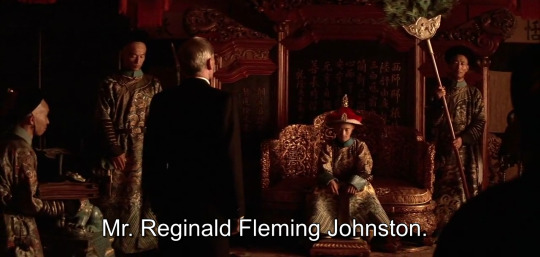

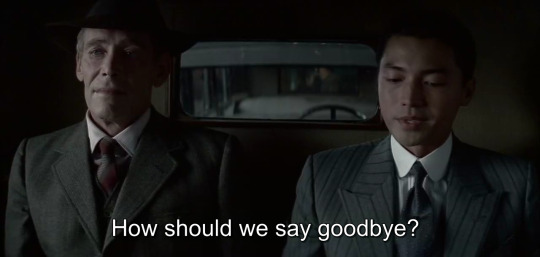

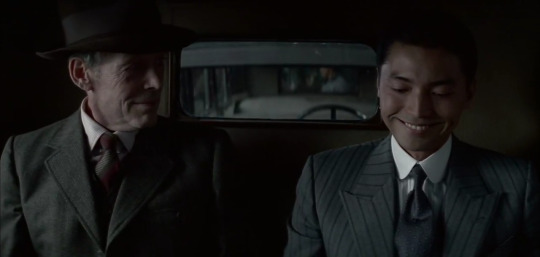



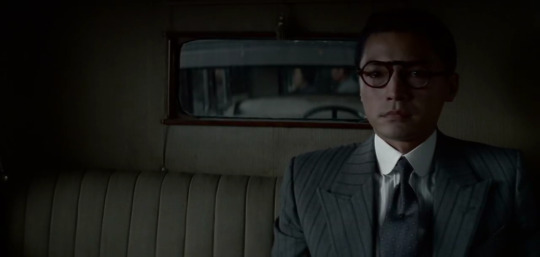
The last emperor, 1987
#biography#drama#history#the last emperor#bernardo bertolucci#enzo ungari#mark peploe#puyi#aisin-gioro pu yi#peter o'toole#john lone#farewell
24 notes
·
View notes
Text
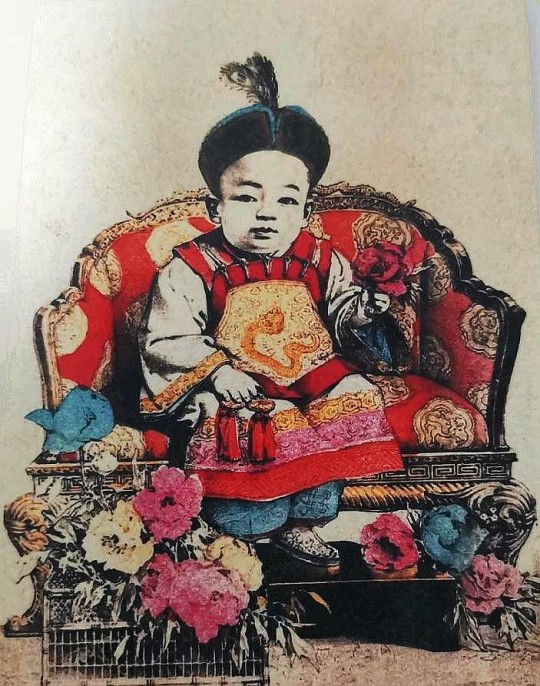
Emperor Puyi of China
7 notes
·
View notes
Link
0 notes
Text

An Extraordinary Wristwatch Belonging to the Last Emperor of China Just Sold for $6.2 Million, Setting Multiple Auction Records
Aisin-Giro Puyi wore the rare Patek Philippe timepiece while detained in Siberia.
After much fanfare, Phillips netted $6.6 million in its Imperial Patek Philippe live sale in Hong Kong, the bulk of which derived from the star lot, a historic Patek Philippe reference 96 Quantieme Lune wristwatch that once belonged to Aisin-Gioro Puyi, the last emperor of the Qing dynasty in China.
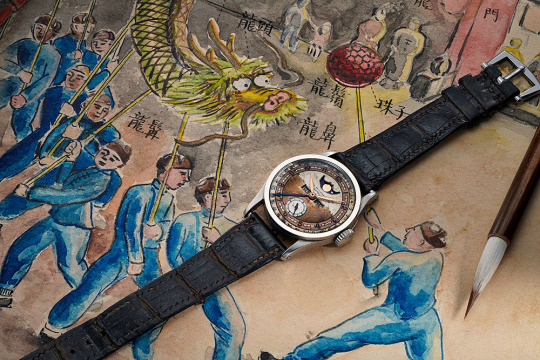
The unique timepiece—which was thought to be lost until it resurfaced recently—sold for $6.2 million to an unidentified Asian collector based in Hong Kong. The buyer placed the winning bid on the phone after “six minutes of spirited bidding,” according to a Phillips spokesperson.
The watch was a feat of horological engineering when it was crafted by the Swiss watchmaker in 1937, packing an ébauche movement mechanism, moon-phase indicator, and triple-date calendar into a single ultra-thin “Roulette” configuration.
64 notes
·
View notes
Text
Very often people raised in families that had some gendered distribution of chores are like fucking aliens to me like what do you mean you never learned to do the dishes? Because you're a man? Your way of living has legitimately stunted you. Tragedy of Aisin Gioro Puyi, terrible misfortune.
15 notes
·
View notes
Photo

“Aisin Gioro Yunying (Puyi's younger sister) was such an interetsing figure. She didn't want to be Japan's puppet & ran away from it. After WWII, she started selling cigarettes to provide for her family. She was not typical royal lady & was a self-sufficient person who could do hard work. Even Chairman Mao called her "A person who enters society becomes someone with aspirations" after readng her autobiography.” - Submitted by Anonymous
34 notes
·
View notes
Text
men i would fist fight in a walmart parking lot at 3am:
-william shatner
-aisin gioro puyi
-henry david thoreau
-william shatner again
24 notes
·
View notes
Note
⏳ historical figures
5 historical figures for the mun
Aisin-Gioro Puyi - Last Emperor of China. As a kid I was interested in him and frequently went back to throughout high school and adulthood. He was still a toddler when his uncle was poisoned and he was enthroned. He didn't even know about how empire ending until he was nearly 18 and kicked out of the palace. Though constantly pushed around for politics, he died of lung cancer in his 60s.
Suleiman the Magnificent - The sultan of the Ottoman Empire during their "Golden Age". I didn't become interested in him until I was an adult. His progress in many different cultural changes of Eastern Europe and the Middle East has fascinated me for some time. There are many laws and regulations put into place by him still enacted today, and he was also a patron of the arts thus enacting a great amount of invention and beautiful things. I still need to look into him more, but I like him.
(( I never finished this, but here are my thoughts for you all! <3 ))
1 note
·
View note
Photo
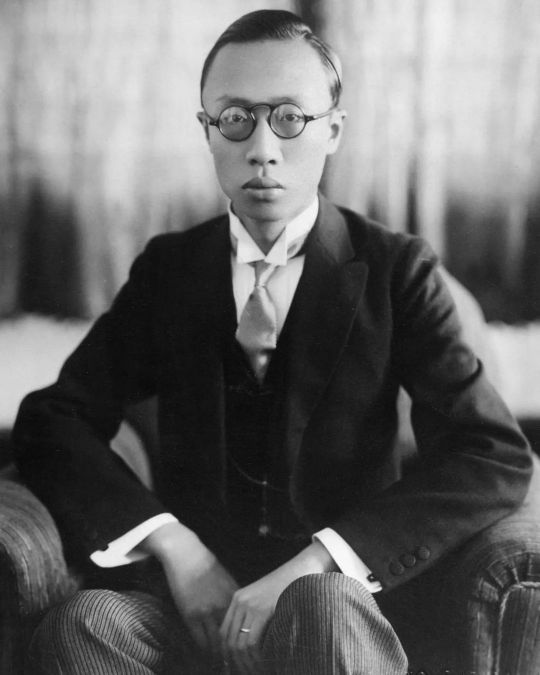
Aisin-Giro Puyi, The Last Emperor of the Qing Dynasty (1906-1967) Born in 1906, Aisin-Gioro Puyi was the last Emperor of the Qing dynasty, ascending the throne as the Xuantong Emperor at nearly three years old in accordance with the Empress Dowager Cixi���s decree. When the Japanese forces surrendered in 1945, Puyi was captured at Shenyang Airport by the Soviet Red Army. After he was detained, Puyi was held first in Chita as a prisoner of war, then incarcerated in a Khabarovsk detention camp for five years. During his time in the Soviet Union, Puyi developed a close friendship with his interpreter, Georgy Permyakov. After Chairman Mao Zedong’s victory in China, he visited the Soviet Union in 1950 and authorities agreed to Puyi’s repatriation. According to a first-hand account by the Emperor’s nephew, it was at this time that Puyi gifted the watch to his friend, the interpreter. In August 1946, Puyi testified at the International Military Tribunal for the Far East as a historical witness. Four years later, in 1950, Puyi was extradited back to China before eventually being granted amnesty several years later and becoming a citizen of New China. He was also appointed Commissioner on Cultural and Historical Materials by the National Committee of the Chinese People’s Political Consultative Conference. On 17 October 1967, Puyi passed away of illness in Beijing at age 61. His life would later be dramatised by Bernardo Bertolucci’s 1987 cinematic masterpiece, The Last Emperor. https://www.instagram.com/p/Cp5zSA1LJgv/?igshid=NGJjMDIxMWI=
2 notes
·
View notes
Text
Imperial japan
By Breitbart
The Imperial Japan Crisis council started smoothly, till it came to the roll call. The delegate of Aisin-Gioro Puyi appeared to be aghast over the use of the Emperor’s name instead of his proper title, the Kang-te Emperor. The matter was resolved swiftly by the Chairs, and the council moved into the first General Speaker’s List.
The delegates spoke about their stances on the decision to invade China, with elaborate reasoning. A few delegates wanted to invade China, but there were another few who felt that keeping the peace was better than waging another war.
The conference proceeded into an unmoderated caucus, where they debated furiously on the topic of conquering China. Some delegates expressed concerns over disrupting peace as a result of going to war with China. Other delegates were more worried about the reaction of Western powers should Japan invade China.
Throughout the unmoderated caucus, delegates discussed the feasibility of having conflict with China and the locations to invade, which include the Tianjin port. There were also some bold suggestions made by the delegates, such as negotiating with China to let them give land and resources to Japan.
From this unmoderated caucus, we can see that the delegates are very considerate, with their concerns over how conflict with China will adversely impact foreign trade. However, the delegates were unable to come to a common agreement on the decision to invade China.
The council moved on to a moderated caucus, where the delegate of Puyi brought up the topic of allying with other parties. The delegate brought up a shocking suggestion: to ally with the Chinese Communist Party (CCP). The delegate of Konoe agreed with this suggestion and gave her reasons later on in a separate interview.
She states, “Personally, I feel that we should take advantage of China’s vulnerable state due to the civil war, and since the delegate of Wang Jingwei, who represents the Kuomintang, has still not done anything to help Japan, we should ally with the CCP.”
The delegate also went on further to say that the debate was not going anyway and hoped for more fruitful discussions in future council sessions.
Meanwhile, many other delegates have called this a risky alliance, with the delegate of Itagaki Seishiro suggesting an alternative alliance with Germany instead. This is given the most recent update then, regarding the Soviets around the Manchurian border.
After the six minutes of the moderated caucus elapsed, the council went into another round of the General Speaker’s List. Delegates who spoke in this round reinforced their stance on alliances with the CCP and Germany.
We look forward to seeing more developments during future council sessions, and hopefully, less delegates will yield their time back to the Chairs during moderated caucuses.
2 notes
·
View notes
Text
The Last Emperor (Movie Review) | An Informative Historical Drama
36 years ago this week the epic portrayal of an Emperor, a citizen's life graced our screen and here's my review of The Last Emperor
#TheLastEmperor #ThrowbackThursday #MovieReview
Bernardo Bertolucci (Director), Puyi (Novel)CASTJohn LoneJoan ChenPeter O’TooleYing RuochengVictor WongDennis DunVivian WuRyuichi SakamotoBased on From Emperor to Citizen, The Autobiography of Aisin-Gioro Pu Yi by Puyi
Review
I’ve been aware of this movie for a long time but only recently saw it when one of my local movie theatre put it back on the big screen. This Academy Awards winning…
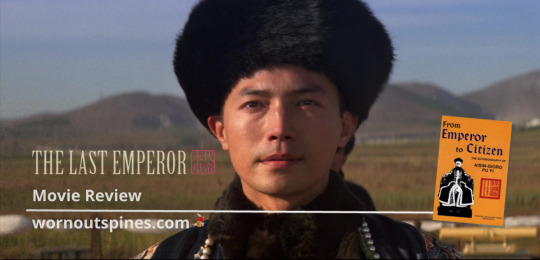
View On WordPress
#Based on a book#Based on a novel#Bernado Bertolucci#Biography#Book adaptation#Book to Film#Book to Movie#Cary-Hiroyuki Tagawa#Dennis Dun#Drama#Enzo Ungari#Fumihiko Ikeda#Garcwrites#Guang Fan#Henry Kyi#history#Jade Go#Joan Chen#John Lone#Maggie Han#Mark Peploe#movie adaptation#movie lovers#movie review#movies#peter o&039;toole#Puyi#Review#Ric Young#Richard Vuu
0 notes
Text
Events 2.18 (before 1940)
1229 – The Sixth Crusade: Frederick II, Holy Roman Emperor, signs a ten-year truce with al-Kamil, regaining Jerusalem, Nazareth, and Bethlehem with neither military engagements nor support from the papacy.
1268 – The Battle of Wesenberg is fought between the Livonian Order and Dovmont of Pskov.
1332 – Amda Seyon I, Emperor of Ethiopia begins his campaigns in the southern Muslim provinces.
1478 – George, Duke of Clarence, convicted of treason against his older brother Edward IV of England, is executed in private at the Tower of London.
1637 – Eighty Years' War: Off the coast of Cornwall, England, a Spanish fleet intercepts an important Anglo-Dutch merchant convoy of 44 vessels escorted by six warships, destroying or capturing 20 of them.
1735 – The ballad opera called Flora, or Hob in the Well went down in history as the first opera of any kind to be produced in North America (Charleston, S.C.)
1781 – Fourth Anglo-Dutch War: Captain Thomas Shirley opens his expedition against Dutch colonial outposts on the Gold Coast of Africa (present-day Ghana).
1791 – Congress passes a law admitting the state of Vermont to the Union, effective 4 March, after that state had existed for 14 years as a de facto independent largely unrecognized state.
1797 – French Revolutionary Wars: Sir Ralph Abercromby and a fleet of 18 British warships invade Trinidad.
1814 – Napoleonic Wars: The Battle of Montereau.
1861 – In Montgomery, Alabama, Jefferson Davis is inaugurated as the provisional President of the Confederate States of America.
1861 – With Italian unification almost complete, Victor Emmanuel II of Piedmont, Savoy and Sardinia assumes the title of King of Italy.
1873 – Bulgarian revolutionary leader Vasil Levski is executed by hanging in Sofia by the Ottoman authorities.
1878 – John Tunstall is murdered by outlaw Jesse Evans, sparking the Lincoln County War in Lincoln County, New Mexico.
1885 – Adventures of Huckleberry Finn by Mark Twain is published in the United States.
1900 – Second Boer War: Imperial forces suffer their worst single-day loss of life on Bloody Sunday, the first day of the Battle of Paardeberg.
1906 – Édouard de Laveleye forms the Belgian Olympic Committee in Brussels.
1911 – The first official flight with airmail takes place from Allahabad, United Provinces, British India (now India), when Henri Pequet, a 23-year-old pilot, delivers 6,500 letters to Naini, about 10 kilometres (6.2 mi) away.
1915 – U-boat Campaign: The Imperial German Navy institutes unrestricted submarine warfare in the waters around Great Britain and Ireland.
1930 – While studying photographs taken in January, Clyde Tombaugh discovers Pluto.
1930 – Elm Farm Ollie becomes the first cow to fly in a fixed-wing aircraft and also the first cow to be milked in an aircraft.
1932 – The Empire of Japan creates the independent state of Manzhouguo (the obsolete Chinese name for Manchuria) free from the Republic of China and installed former Chinese Emperor Aisin Gioro Puyi as Chief Executive of the State.
1938 – Second Sino-Japanese War: During the Nanking Massacre, the Nanking Safety Zone International Committee is renamed "Nanking International Rescue Committee", and the safety zone in place for refugees falls apart.
0 notes
Text

The Xuantong Emperor (Center with sunglasses) sitting with his siblings.
Sitting from left to right: Princess Yunyu (1919 - 1982), Princess Yunxian (1914 - 2003) , Prince Puren (1918 - 2015), Princess Yunxin (1917 - 1998) and Princess Yunhuan (1921 - 2004).
Standing from left to right: Princess Yunhe (1912 - 2001), Prince Pujie (1907 - 1994) and Princess Yunying (1913 - 1992).
#emperor puyi of china#yunying of the gobulo clan#zhen yunhe#yunxian of the zhao clan#wan yunxin#yunyu of the wanyan clan#qiao yunhuan#prince puren of china#chinese imperial family#chinese history#qing dynasty#house of aisin-gioro#gobulo clan#zhao clan#wanyan clan
18 notes
·
View notes